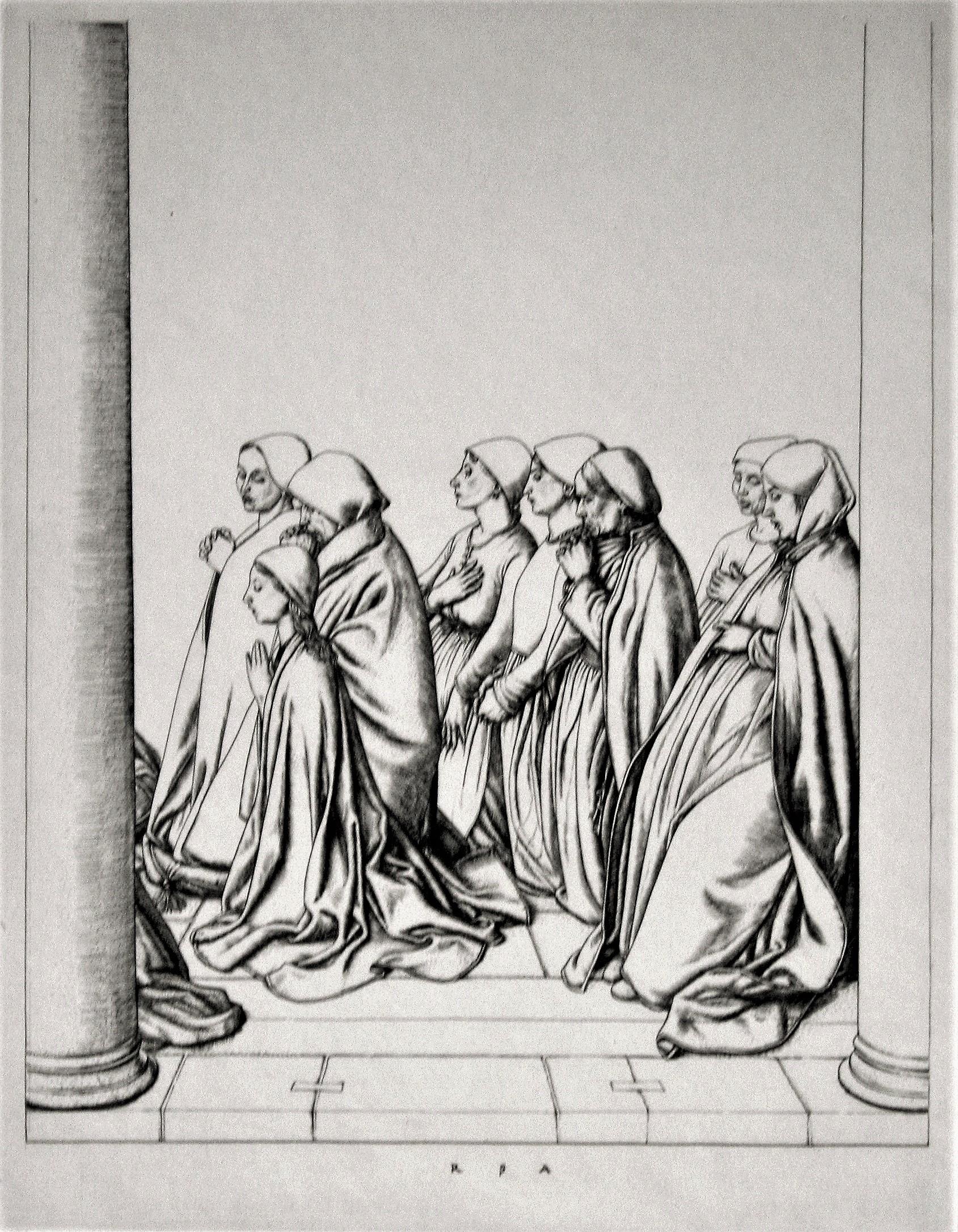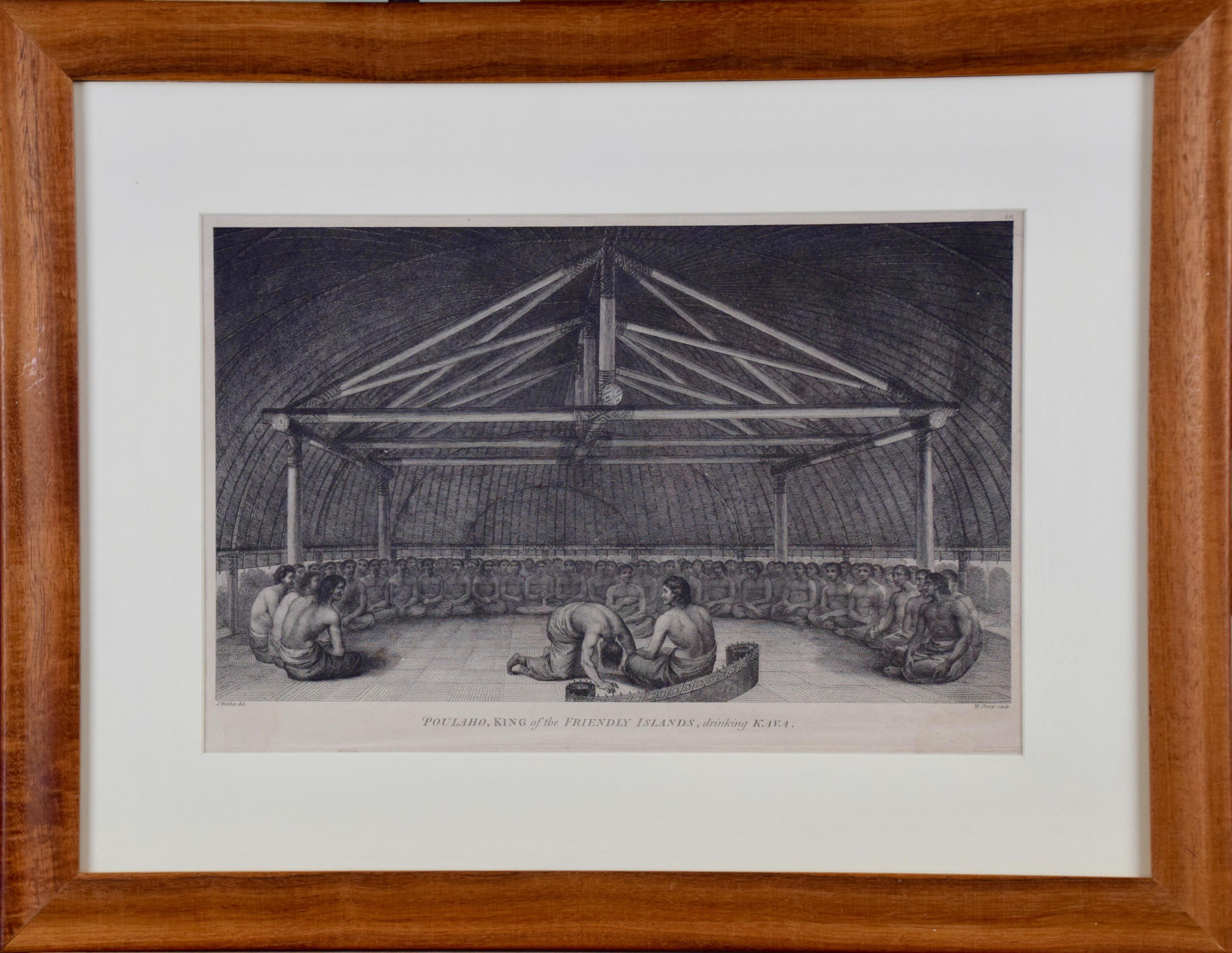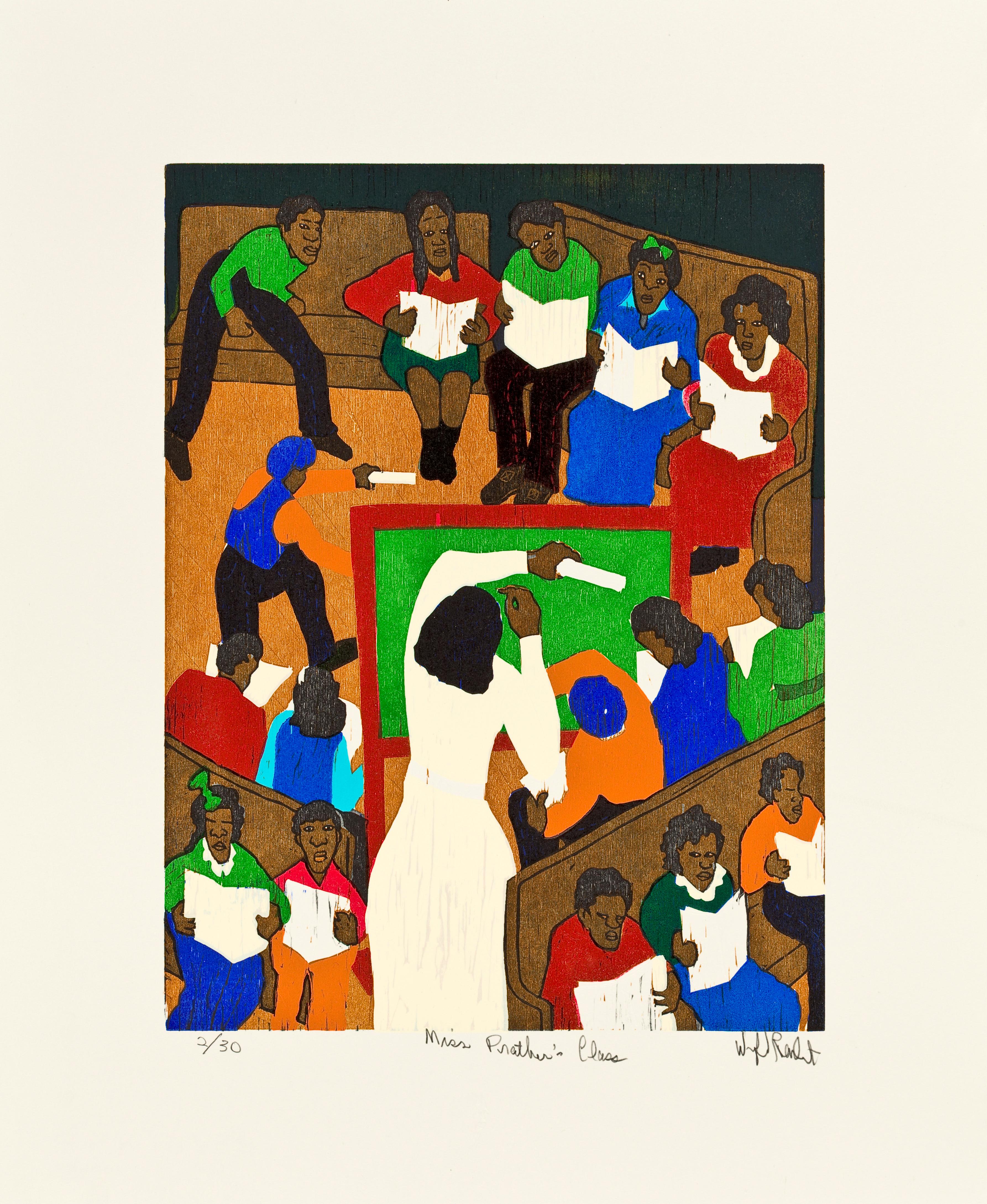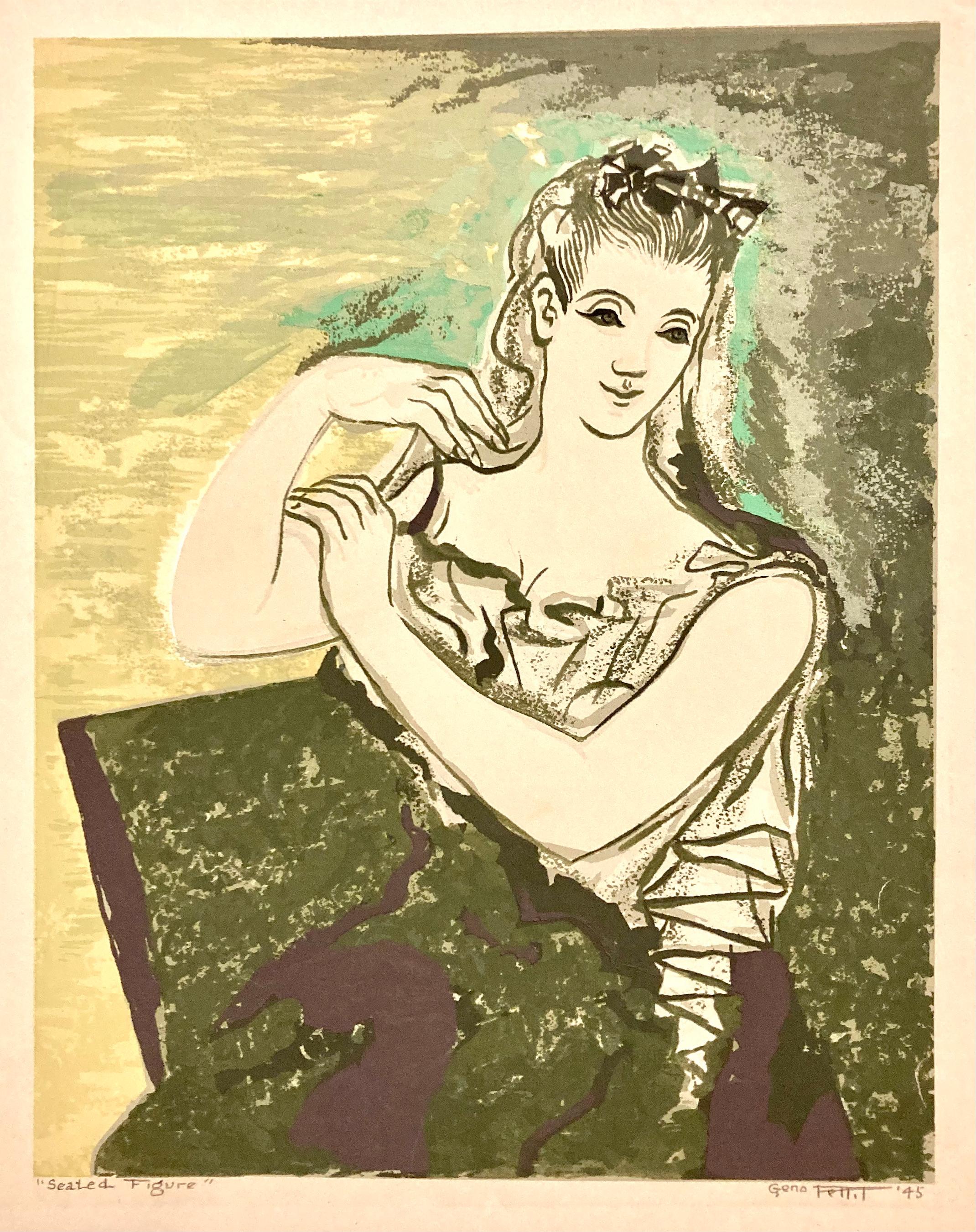Items Similar to Print Porcelain Plaque Last Supper Painting after Leonardo in Carved Wood Frame
Want more images or videos?
Request additional images or videos from the seller
1 of 10
UnknownPrint Porcelain Plaque Last Supper Painting after Leonardo in Carved Wood Frameearly 20th century
early 20th century
About the Item
A lovely early 20th century printed porcelain miniature of The last supper painting after Leonardo Da Vinci in Italian Cenacolo. This Swiss French manufacture rectangular porcelain plaque, depicting one of the most important Renaissance works of art, is housed in a wonderful wood frame finely carved with geometrical motifs. The porcelain has an impressed clay mark number 107 left low verso and there is the original retailers sticker to the reverse of the plaque for - A L' Industrie Suisse, Maurice Bloch Geneve- a noted high end retailer of art and bijouterie. Maurice Bloch was a Jewish merchant and artisan who made and sold tourist goods including cuckoo clocks in Geneva, Switzerland in the 1800's. His third child was Ernest Bloch (b. 1881) who became one of the great American Classical composers of the 20th century. Maurice Bloch died in 1913. A little history to add to this well made reproduction of one of the world's most recognizable Italian mural painting. A very nice piece that will make a great addition to your collection, perfect as a vitrine object or to hang on the wall. The plaque is in very good order with no obvious scratches or rubbing. The Last Supper, Italian Cenacolo, one of the most famous artworks in the world, painted by Leonardo Da Vinci probably between 1495 and 1498 for the Dominican monastery Santa Maria della Grazie in Milan. It depicts the dramatic scene described in several closely connected moments in the Gospels. The theme of the work is given by the Christians at the last meal that Jesus Christ took with the Twelve Apostles on the evening of Holy Thursday, in which Jesus declares that one of the Apostles will betray him. Each one of the 12 disciples reacts in a manner that Leonardo considered fit for that man’s personality. The result is a complex study of varied human emotion, rendered in a deceptively simple composition.
H 18 cm x W 23 cm x D 3 cm
- Creation Year:early 20th century
- Dimensions:Height: 7.09 in (18 cm)Width: 9.06 in (23 cm)Depth: 1.19 in (3 cm)
- Medium:
- Movement & Style:
- Period:
- Condition:
- Gallery Location:Firenze, IT
- Reference Number:
About the Seller
5.0
Vetted Seller
These experienced sellers undergo a comprehensive evaluation by our team of in-house experts.
Established in 1950
1stDibs seller since 2018
16 sales on 1stDibs
- ShippingRetrieving quote...Ships From: Firenze, Italy
- Return PolicyA return for this item may be initiated within 3 days of delivery.
More From This SellerView All
- Italian Renaissance Egg Tempera Fresco on Canvas, The Temptation of Adam and EveLocated in Firenze, ITThis art piece is a Florentine Renaissance period fresco of late 1500 hand painted with egg tempera representing the temptation of Adam and Eve, this pivotal moment in the history of genesis is framed in an oval scrolled cartouche and flanked by architectural pillars featured as two sculptural male and female caryatids holding the entablature of the palazzo. This antique Italian old master...Category
16th Century Renaissance Figurative Paintings
MaterialsCotton Canvas, Egg Tempera
- Italian Painter’s Portrait Engravings on Laid Paper on Canvas in Ebonized FramesLocated in Firenze, ITThese beautiful Italian 18th Centruy engravings on laid paper feature the portrait of two famous Italian painters: Veronese and Guido Reni. They were engraved by Pier Antonio Pazzi a...Category
18th Century Baroque Portrait Prints
MaterialsCotton Canvas, Laid Paper, Engraving
- Ram's Head Contemporary Plaster Sculpture with Green Patina Ancient Rome StyleLocated in Firenze, ITThis contemporary plaster sculpture of a ram’s head is inspired by the art of Ancient Rome and Ancient Greece with a reference to Neoclassicism and Neoclassical period old masters, when the discoveries of archaeological sites became the focal point in art history between the 18th and 19th century. The artist is able to attribute incredible details to this work of art featuring a majestic appearance due to its large curling ridged horns. This animal figurative work of art is sculpted on the round, the artist took inspiration both from his imagination and archaic reminiscences. He modeled the inert chalk creating an animal with very real facial expression and incredible realistic features with intricate detailed head. This sculpture is the plaster cast hand modeled by the artist that served him as a reference model to create a bronze sculpture with the lost wax technique, also the bronze version is on sale on my page. So it represents the first phase of a fascinating and long process of creating sculptural art, a studio piece made as a maquette before a bronze version was cast. The present aries' head sculpture has been painted to simulate the green patina that archaeological metal sculptures take over the centuries. Two green patina sculptures...Category
2010s Contemporary Still-life Sculptures
MaterialsPlaster, Lacquer, Paint, Chalk
- Venice Landscape Italian Oil on Canvas Painting in Gilt Wood Frame, Belle EpoqueLocated in Firenze, ITThis delightful turn of the century (early 20th century) oil on canvas painting represents an Italian landscape with one of the most famous squares in the world: Piazza San Marco in ...Category
Early 20th Century Impressionist Landscape Paintings
MaterialsCanvas, Oil
- Italian Oil on Canvas Painting Coat of Arms in Gold Leaves Panel and Black FrameLocated in Firenze, ITThis huge Italian 19th century armorial painting features the coat of arms of Montini, a noble Italian family that has among its ancestors the Archbishop of Milan, later known as Pope Paul VI. The large oval canvas has a brown and red background, the latter shaped like a shield, in which six mountains (from the etymology of the surname) and three white fleur de lis are painted. This big scale palatial oil painting...Category
Late 19th Century Italian School Figurative Paintings
MaterialsOil, Canvas, Wood
- French Tempera on Canvas Four Panels Folding Screen with Seascape ViewLocated in Firenze, ITThis French early 20th Century folding screen is made up of four canvases entirely painted with textured tempera featuring a marine l...Category
Early 20th Century Realist Landscape Paintings
MaterialsCanvas, Tempera
You May Also Like
- Women at PrayerBy Robert Sargent Austin, R.A., P.R.E., P.R.W.S.Located in Storrs, CT10 15/16 x 8 7/16 (sheet 13 13/16 x 10 13/16). Subsequent to Dodgson. Edition 40 published by the Twenty-One Gallery for 7 guineas. Illustrated: Fine Prints of the Year, 1936. A rich...Category
1930s Renaissance Figurative Prints
MaterialsEngraving
- Bow Street Office: Rowlandson Hand-colored Engraving from Microcosm of LondonBy Thomas RowlandsonLocated in Alamo, CAAn early 19th century print entitled "Bow Street Office", an illustration (Plate 11) from "The Microcosm of London", published in London in 1808 by R. Acker...Category
Early 1800s Other Art Style Interior Prints
MaterialsEtching, Aquatint
- "King of the Friendly Islands" (Tonga); Engraving from Captain Cook's 3rd VoyageBy John WebberLocated in Alamo, CA"Poulaho, King of the Friendly Islands, Drinking Kava" is an engraving created by William Sharp (1749-1824), from a drawing by John Webber (1752-1793), who was the artist on Captain James Cook's 3rd and final voyage of discovery. It was published in the atlas of "A Voyage to the Pacific Ocean Undertaken by the Command of His Majesty, for Making Discoveries in the Northern Hemisphere", the official British Admirality sanctioned journal published upon completion of the voyage in London in 1784 by Strahan & Cadell. Captain Cook visited Tonga on his 3rd voyage, which he named The Friendly Islands because of the warm welcome he and his crew received, unlike some of the other more hostile Pacific islands. The engraving depicts Cook and his men observed a kava ceremony at the village of Mu’a on Tongatapu. King Paulaho sits in the centre foreground, his back to the spectator with a man kneeling before him. The ceremonial mat depicted behind Paulaho indicates that nobody was allowed to sit behind him. The figure in the centre holds a single cup, referring to the Tongan custom of offering the cup to the king first. Kava is native to the islands of the South Pacific and was first described for English readers in 1768 by Captain James Cook. The kava root has been used for centuries as a central feature of ceremonies and celebrations because it was able to bring about a calming and pleasant social atmosphere. The root was crushed and processed into coconut milk to become the focal ceremonial beverage, simply referred to as kava. This engraving is presented in a Koa wood frame and a white mat. Koa wood is legendary in Hawaii. There are occasional faint spots, but the print is otherwise in very good condition. This amazing Koa wood is native to Hawaii and it is known for the deep rich colors and varied grain pattern. Koa has an honored heritage in Hawaii and is highly revered and sacred. The word “koa” means “warrior” in Hawaiian. The warriors of King Kamehameha the Great, created canoes and weapons from a wood plentiful on the Big Island of Hawaii. This wood became synonymous with the warriors themselves, and it became known as koa. There are three other engravings listed from the official journal of Captain Cook's 3rd voyage available that are presented in identical Koa wood frames and mats (LU117324682422, LU117324684052, LU117324684032). They would make a wonderful grouping for a display of 2, 3 or 4 prints. A discount is available for a grouping depending on the number of items included. Captain Cook is remembered as one of the greatest explorers and navigators in history. His explorations included Australia, New Zealand and islands of the South Pacific and the northwest coast of North America. Hawaii was discovered by Captain Cook during this voyage. Hawaii was originally called The Sandwich Islands in honor of The Earl of Sandwich...Category
1780s Realist Figurative Prints
MaterialsEngraving
- ICE CREAM DESSERTSBy Claes OldenburgLocated in Aventura, FLHand initialed and numbered by the artist. Etching and aquatint in colors, on handmade paper. Image size: 13.5 X 21.25 in. Sheet size: 22.5 x 31.25 in. Framed. Edition of 50. Artwor...Category
1970s Pop Art Figurative Prints
MaterialsHandmade Paper, Etching, Aquatint
- Miss Prather's ClassBy Winfred RembertLocated in New York, NYColor Reduction woodcut from 4 blocks with 4 silk screen colors and embossing on white Rives BFK paper Edition 28/30, Unframed MassArt welcomed artist Winfred Rembert for the 2014 Master Print Series, an artist in residency project during which, an established artist transforms an idea into physical artwork, and invites students to collaborate in the art-making process. A self-taught artist, Winfred Rembert records a painful chapter of American history in autobiographical paintings, created on hand-tooled and dyed leather, which explore the lives of African Americans in Jim Crow-era Georgia. After taking part in civil rights demonstrations, he survived a lynching only to be sent to prison to do hard labor on a chain gang. Another inmate taught him leatherworking and Rembert began depicting his past in engaging compositions and vibrant color. In many scenes, Rembert offers a raw view of racism, inequality, and violence while celebrating his community’s resilience in the face of such overwhelming injustice. Winfred Rembert also participated in the Adderley Lecture series, which features distinguished artists, historians, and writers and was established in 1995 in memory of Tyrone Maurice Adderley. Past Adderley lecturers have included Chakaia Booker, Melvin Edwards...Category
2010s Folk Art Figurative Prints
MaterialsWoodcut, Screen
- Geno Pettit, Seated FigureLocated in New York, NYSeated Figure by Geno (sometimes Genoi) Pettit, made in 1945, is a wonderfully 'moderne' image. The woman is wearing a roman-inspired blouse or dress and is shown against a yellow/green, chartreuse background. There is the feeling she is about to lead an ancient procession at any moment! Pettit and her husband, Guy McCoy...Category
Mid-20th Century American Modern Figurative Prints
MaterialsScreen
Recently Viewed
View AllMore Ways To Browse
Antique Wood Frames
Antique Wood Frame
Antique Prints Framed
Antique Print Framed
Antique Framed Print
Antique Framed Prints
Framing Antique Prints
Framed Antique Prints
Carved Wood Art Framed
Framed Plaques
French Carved Art Frames
Antique Wood Plaque
Wood Carved Plaque
Carved Wood Plaque
House Plaque
Wood Carved Child
Painted Wood Plaque
French Porcelain Framed





